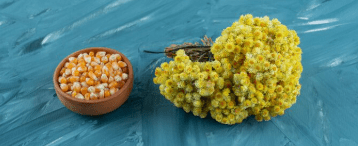
Calcarea phosphorica
Latin name: Calcarea phosphorica
Short name: Calc-p
Common name: Calcium Phosphate | Phosphate of Lime | Tricalcium Phosphate
Primary miasm: Tubercular Secondary miasm(s): Psoric
Kingdom: Minerals
Family: Inorganic salt
- Symptomatology
- Remedy Information
- Differentiation & Application
A mineral salt composed of calcium and phosphoric acid (Ca₃(PO₄)₂), occurring naturally in bones, teeth, and certain rocks. Prepared for homeopathic use by triturating the pure salt. It represents the combination of two deeply nutritive and formative substances: Calcarea, the builder of bone and structure, and Phosphorus, the spark of metabolism and nervous vitality.
Used in nutrition and medicine to strengthen bones, teeth, and connective tissue; important in growth, fracture healing, and prevention of rickets. In biochemistry, included in Schüßler’s twelve tissue salts.
Fragmentary provings and abundant clinical confirmation; recorded in Hering, Clarke, and Boericke. Much of its known pathogenesis comes from Schüßler’s tissue-salt observations and clinical records rather than a full Hahnemannian proving.
- Bones and joints – Especially epiphyses, sutures, and sites of active growth; non-union of fractures [Hering, Clarke].
- Teeth – Poor formation, rapid decay, delayed dentition.
- Spine – Weakness, curvature, scoliosis in growing children.
- Glands – Enlarged mesenteric glands in scrofulous children.
- Digestive system – Slow digestion with tendency to acidity.
- Nervous system – Neuralgias, headaches from mental exertion.
- Blood and nutrition – Anaemia, wasting, slow convalescence.
- Warm, dry weather.
- Summer and seaside air [Clarke].
- Rest, lying down when weak from exertion.
- Gentle nourishment with easily digested food.
- Warm clothing over abdomen in children with mesenteric enlargement.
- Cold, damp weather, especially spring and autumn transitions.
- Change of weather; every exposure to chill.
- Physical exertion, ascending stairs.
- During growth spurts in children.
- Mental strain in anaemic patients.
- Calcarea carbonica – Fat, flabby, chilly; Calc-p. more thin, anaemic, restless.
- Phosphorus – Tall, slender, nervous; Calc-p. has more bone/joint focus in growth.
- Silicea – Slow growth with suppuration; Calc-p. slow growth without marked suppuration.
- Baryta carbonica – Mental backwardness prominent; Calc-p. more physical backwardness.
- Complementary: Ferrum phos., Natrum mur., Silicea.
- Antidotes: Nux vom., Pulsatilla.
- Follows well: After Ferrum phos. in anaemic children; after Calc. carb. in delayed growth.
A growth and nutrition remedy par excellence, Calcarea phosphorica addresses the delicate, anaemic, growing organism — the child with open fontanelles, the adolescent with growing pains, the young woman with delayed menses, the adult convalescent who cannot regain vitality. It bridges calcium’s structural building with phosphorus’s nervous energy, creating resilience in both bone and spirit.
- Prime remedy for non-union of fractures in elderly or malnourished patients [Clarke].
- A leading tissue salt for growing children prone to headaches, school fatigue, and anaemia.
- Restores nutrition after prolonged fevers.
- Essential in orthodontic cases to strengthen jaw development.
Mind:
- Dullness from mental exertion.
- Irritable, dissatisfied children.
Head:
- Fontanelles remain open too long.
- Headache in schoolchildren.
Teeth:
- Delayed dentition.
- Rapid decay.
Abdomen:
- Enlarged mesenteric glands.
- Distension in tubercular children.
Extremities:
- Growing pains.
- Cold, damp feet.
Generalities:
- Non-union of fractures.
- Slow convalescence.
- Hering, C. – Guiding Symptoms: Growth, bone, and glandular indications.
- Clarke, J.H. – Dictionary of Practical Materia Medica: Extensive clinical applications.
- Boericke, W. – Pocket Manual: Keynotes and modalities.
- Allen, T.F. – Encyclopaedia: Proving fragments and clinical additions.
- Hughes, R. – Cyclopaedia of Drug Pathogenesy: Physiological rationale.
- Farrington, E.A. – Clinical Materia Medica: Comparative notes with other calcareas.
- Kent, J.T. – Lectures: Constitutional and miasmatic placement.
- Nash, E.B. – Leaders: Growth and nutrition focus.
- Boger, C.M. – Synoptic Key: Modalities and essence.
- Schüßler, W.H. – Abridged Therapeutics: Tissue salt use.
